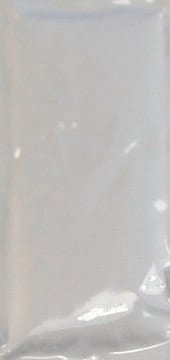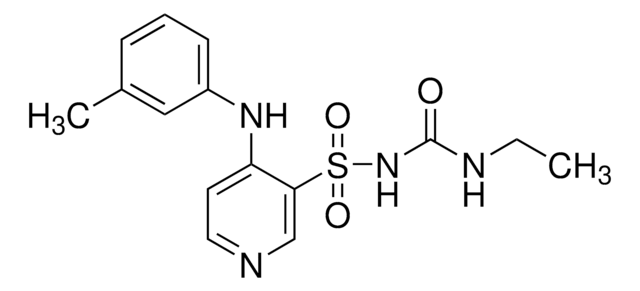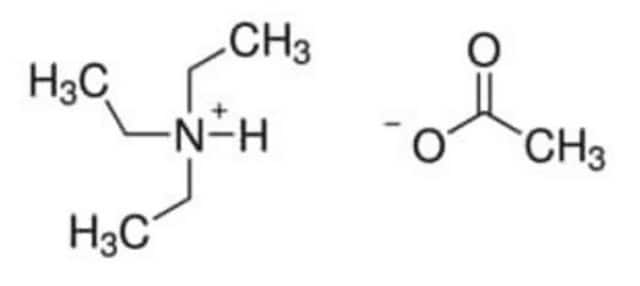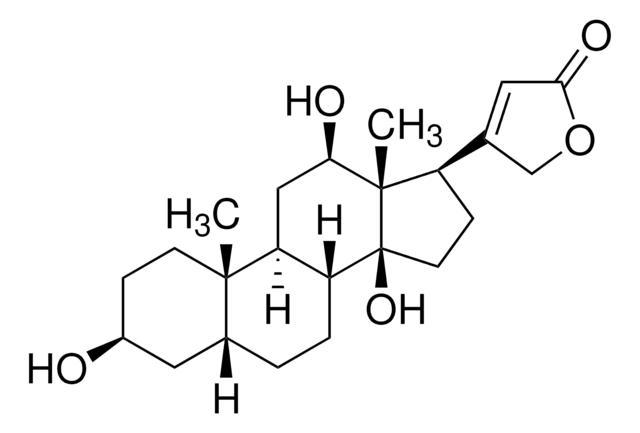B9305
BW 245C
≥98% (HPLC), solid
Sinónimos:
3-(3-Cyclohexyl-3-hydroxypropyl)-2,5-dioxo-(R*,S*)-(±)-4-imidazolineheptanioc acid
About This Item
Productos recomendados
Ensayo
≥98% (HPLC)
Formulario
solid
color
off-white
solubilidad
DMSO: soluble 10 mg/mL
emisor
GlaxoSmithKline
temp. de almacenamiento
−20°C
cadena SMILES
O[C@H](CCN1[C@@H](CCCCCCC(O)=O)C(=O)NC1=O)C2CCCCC2
InChI
1S/C19H32N2O5/c22-16(14-8-4-3-5-9-14)12-13-21-15(18(25)20-19(21)26)10-6-1-2-7-11-17(23)24/h14-16,22H,1-13H2,(H,23,24)(H,20,25,26)/t15-,16+/m0/s1
Clave InChI
ZIDQIOZJEJFMOH-JKSUJKDBSA-N
Información sobre el gen
human ... PTGDR(5729)
Acciones bioquímicas o fisiológicas
Características y beneficios
Código de clase de almacenamiento
13 - Non Combustible Solids
Clase de riesgo para el agua (WGK)
WGK 3
Punto de inflamabilidad (°F)
Not applicable
Punto de inflamabilidad (°C)
Not applicable
Equipo de protección personal
Eyeshields, Gloves, type N95 (US)
Elija entre una de las versiones más recientes:
Certificados de análisis (COA)
¿No ve la versión correcta?
Si necesita una versión concreta, puede buscar un certificado específico por el número de lote.
¿Ya tiene este producto?
Encuentre la documentación para los productos que ha comprado recientemente en la Biblioteca de documentos.
Nuestro equipo de científicos tiene experiencia en todas las áreas de investigación: Ciencias de la vida, Ciencia de los materiales, Síntesis química, Cromatografía, Analítica y muchas otras.
Póngase en contacto con el Servicio técnico






